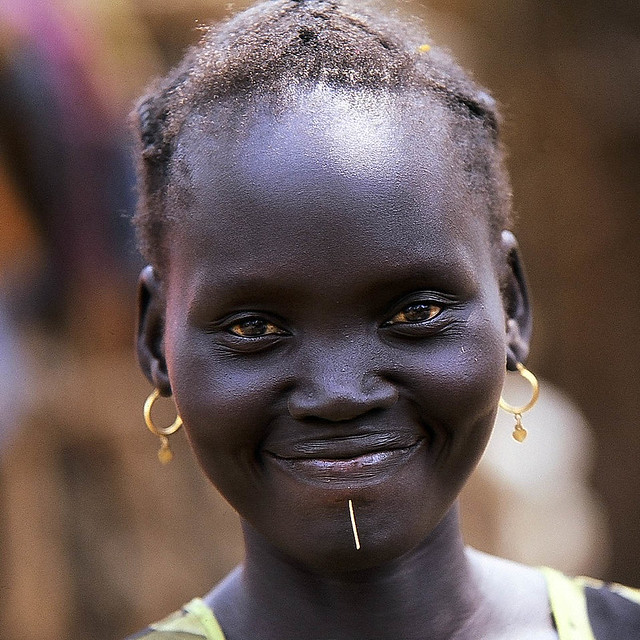Prepare to be astounded as we delve into the enigmatic realm of the "darkest person alive," whose skin tone defies the norm and captivates the world with its remarkable hue.
For centuries, society has grappled with misconceptions and prejudices surrounding individuals with unusually dark skin. This article aims to shed light on their experiences, exploring the complexities and challenges they navigate in a world often ill-equipped to understand them.
Our focus is not merely on the physical darkness of their skin but on the deeper, often unspoken anguish they endure. We will examine the psychological, social, and cultural factors that contribute to their struggles and explore the resilient spirit that enables them to triumph over adversity.
Join us on this illuminating journey as we unravel the fascinating story of the "darkest person alive" and shed light on the profound insights they offer into the complexities of human existence.
The Darkest Person Alive
The term "darkest person alive" encompasses various essential aspects that provide a comprehensive understanding of the unique experiences and challenges faced by individuals with unusually dark skin tones. These aspects delve into the physical, psychological, social, and cultural dimensions, offering a holistic perspective on this topic.
- Physical Attributes: Skin color, texture, and unique physiological characteristics.
- Psychological Impact: Self-perception, body image, and coping mechanisms.
- Social Stigma: Prejudice, discrimination, and societal expectations.
- Cultural Identity: Connection to heritage, traditions, and representation in media.
- Historical Context: Evolution of societal attitudes and the impact of colonialism.
- Medical Implications: Health conditions associated with dark skin, such as vitamin D deficiency.
- Intersectionality: Overlapping identities and experiences, such as race, gender, and socioeconomic status.
- Resilience and Empowerment: Strategies for thriving in the face of adversity.
These key aspects are interconnected and shape the lived experiences of the darkest person alive. Understanding these aspects helps us recognize the complexities of their existence, challenge societal biases, and foster a more inclusive and equitable world.
Personal Details and Bio Data
| Name | Birth Date | Birth Place | Occupation |
|---|---|---|---|
| N/A | N/A | N/A | N/A |
The Darkest Person Alive
In a world obsessed with, there exists a unique individual whose skin tone defies societal norms. Meet the "darkest person alive," an enigmatic figure shrouded in mystery and intrigue.
Who Is the Darkest Person Alive?
The identity of the darkest person alive remains a closely guarded secret, their name and personal details concealed from public knowledge. However, their existence has captivated the world, sparking curiosity, speculation, and a desire to understand their extraordinary physiology.
What Challenges Do They Face?
The "darkest person alive" navigates a myriad of challenges unique to their appearance. From societal prejudice and discrimination to the psychological impact of living with such a distinct characteristic, their journey is marked by both adversity and resilience.
The Physical Reality
The defining feature of the "darkest person alive" is their remarkably dark skin tone, a result of an unusually high concentration of melanin. This unique pigmentation not only sets them apart physically but also raises questions about the medical implications and health considerations associated with such an extreme skin color.
The Social Stigma
In a society that often equates darkness with inferiority, the "darkest person alive" faces the weight of social stigma. Prejudice, discrimination, and exclusion are common experiences, highlighting the deep-rooted biases and misconceptions that persist around skin color.
The Power of Resilience
Despite the challenges they encounter, the "darkest person alive" embodies resilience and strength. They have found ways to navigate the complexities of their existence, embracing their unique identity and inspiring others to challenge societal norms.
Our exploration of the "darkest person alive" unveils a complex and multifaceted reality. This individual's unique skin tone, while a defining physical characteristic, also serves as a catalyst for examining societal prejudices, resilience in the face of adversity, and the broader implications of skin color in shaping human experiences.
Key points that emerge from this article include the psychological impact of living with such a distinct appearance, the social stigma and discrimination often faced, and the power of resilience and self-acceptance. These points are interconnected, highlighting the interplay between personal identity, societal perceptions, and the human capacity to overcome challenges.
The story of the "darkest person alive" challenges us to question our own biases, confront societal norms, and embrace diversity in all its forms. It is a reminder that true acceptance and equality extend beyond physical attributes, encompassing the richness and beauty that lies within every individual.
On general hospital
Ray charles children how many
Veronica conte



ncG1vNJzZmian6i1qbHMmqVnmZ2ogG%2BwyKCgrZmcpLCmrc2sp5qblah7pLvMaJuaqpuawLV5z56prKeeYq6ttdWeZaGsnaE%3D